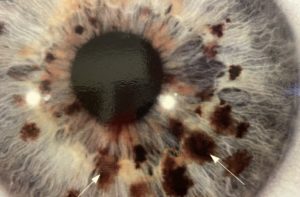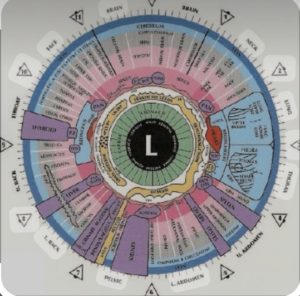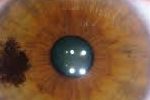Where Did Iridology Originate?
Iridology has been around for centuries. In Egypt, India and China, there was much attention devoted to the study of the iris and its relation to various organs of the body. In the 17th, 18th and 19th centuries, Medical Practitioners recorded the works on iris markings and their meanings. The condition of the eyes were carefully noted by Doctors who related markings to blood disorders and liver weaknesses. Iridology was originally documented in 1670 by Philippus Meyens, a German Physician. He categorised the iris in accordance to body organs.
However, modern Iridology was founded in 1867 by Dr Ignatz Von Peczley, a 19th century Hungarian physician. He studied the iris of patients before and after surgery and systematically recorded his findings. During his childhood, Dr Peczely accidently broke the leg of an owl. He noticed a dark black mark appearing at the 6 0’clock location in the owl’s eye. This mark changed in form and shading over time as the owl’s leg healed. The dark shade lightened, however never completely disappeared.

In the 1860s, Nils Lijequist, a young Swedish boy noticed changes in the colour of his formerly blue eyes. He noticed drug spots or pigments appearing in his iris after taking a vaccination and doses of quinine and iodine. The vaccination caused the enlargement of Nils’ lymph nodes. He then studied medicine and homeopathy and helped customers who wanted to remove toxins from their body. Nils devoted much attention to the study of the colours of the iris caused by poisonous drugs and sought to discover the charateristics of each colour. For example :
Dull luster in lead poisoning,
The minute glittering points in mercury poisoning,
A yellow-white in quinine,
A misty grey in opium creosote,
A light grey in opium poisoning,
A grey-white in arsenic and
A dirty grey in salicylic acid.
In 1950, an American Chiroprator, Dr Bernard Jensen pioneered the science of Iridology in the USA and developed one of the most comprehensive Iridology Charts. This Iridology Chart shows the location of the body’s organs as they reflect in the iris of the eye. Dr Jensen’s Iridology Charts are still widely used to date and are the most widely used worldwide. Dr Jensen went on to study nutrition and natural healing and living as healthy as possible became his burning desire. He applied his knowledge of Iridology towards helping his patients with excellent resultse could recommend customised natural remedies to each individual. Dr Jensen wrote over fifty books covering the importance of maintaining a clean digestive system, the value of Iridology and the importance of great nutrition.


Dorothy Hall, a contemporary of Dr Jensen, recognised the unique connection between the patterns and colours in the iris and health conditions and personality of each individual. The left eye is believed to correspond with the left side of the body and the right eye with the right side of the body. In general, organs such as the brain and thyroid are at the top of the iris and organs such as genitals and kidneys are at the bottom of the iris.
Dr Bernard Jensen’s daughter in law, Ellen Tart-Jensen integrated her father in law’s work, together with works of others to create a more unified field. This included information Dr Jensen was unable to access during the Second World War when communication was cut off. Ellen updated the iridology terminology to be more consistent with other disciplines that study the eye.
Watch our short video to learn more about Where Did Iridology Originate.
Iridology is the study of the patterns and colours on the iris of the eye. This study enables a person’s overall health condition to be determined. It is a non-invasive method of viewing the iris to determine existing or potential health issues. Iridologists use iridology charts to make these observations. Iridology Charts have been created after observation of a variety of irises over the years. Each marking and zone in the iris represents a different aspect or organ of the human body.
Iridology can show History of Illnesses and ongoing weaknesses in the body. It some cases, it can also show scarring from surgery on specific organs. It can detect potential diseases over ten years before symptoms arise and is therefore a very powerful tool for a non invasive health check.
Iridology research continues around the world, including Australia, the USA, Canada, United Kingdom, Russia, South Korea, China and Europe. When you visit a Clinic such as ours, we combine Iridology findings with Sclerology, which is the study of the whites of the eyes. The Whites of the Eyes or Sclera also show weaknesses in various organs such as the liver and also Vitamin C Deficiency.
To learn more about Where Did Iridology Originate, check out our other related blogs:
What is Iridology and Sclerology?
Iridology Pictures and Meanings
Can You See Illness In Your Eyes?
Can Iridology Detect Heart Problems?
NEXT STEPS
Book in a complimentary 15 minutes Zoom call with us (valued at £99) to enable us to clarify questions you may have on a specific health concern.




